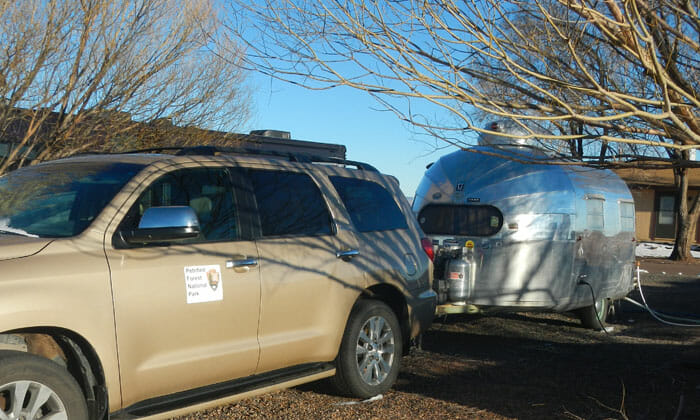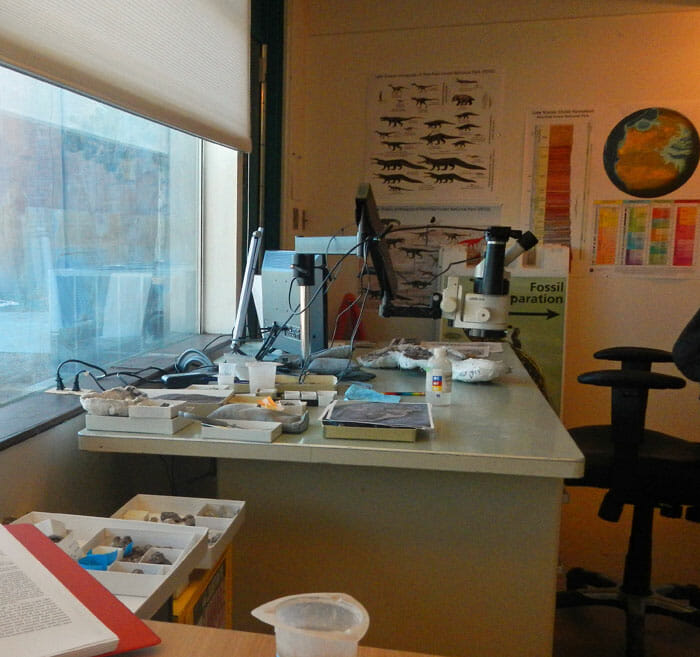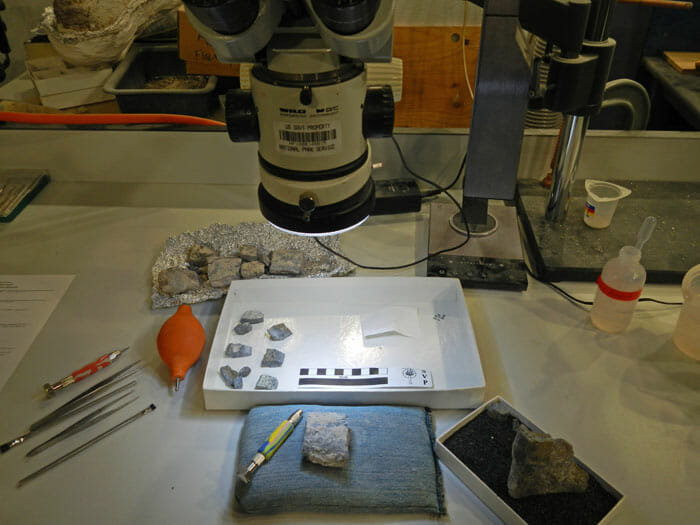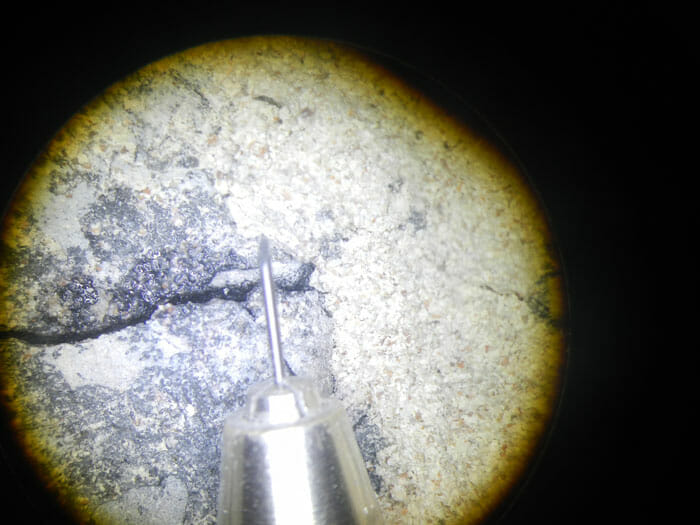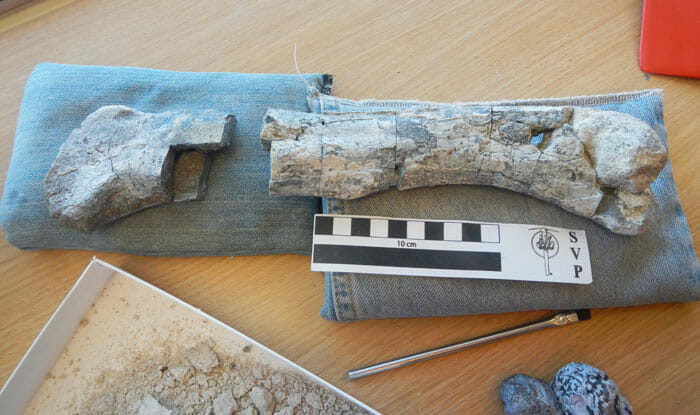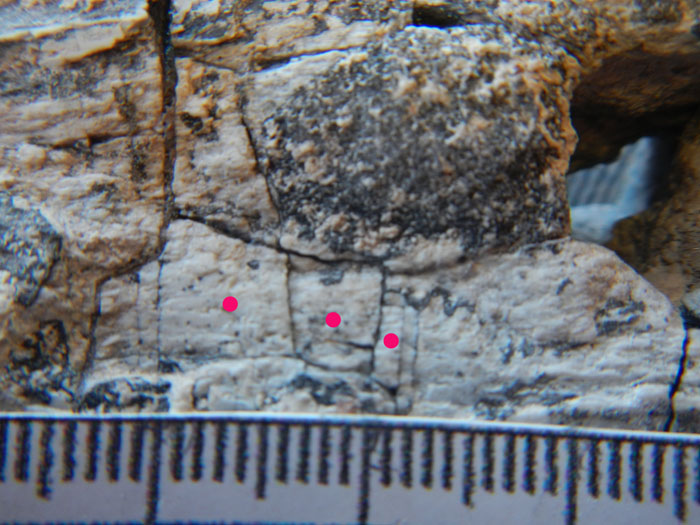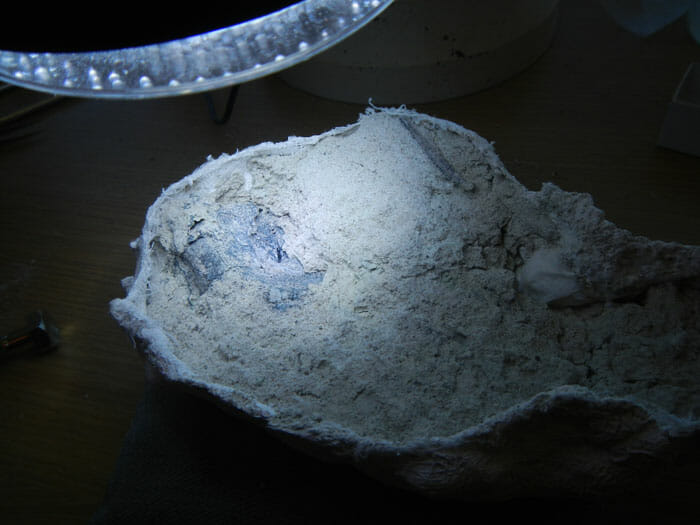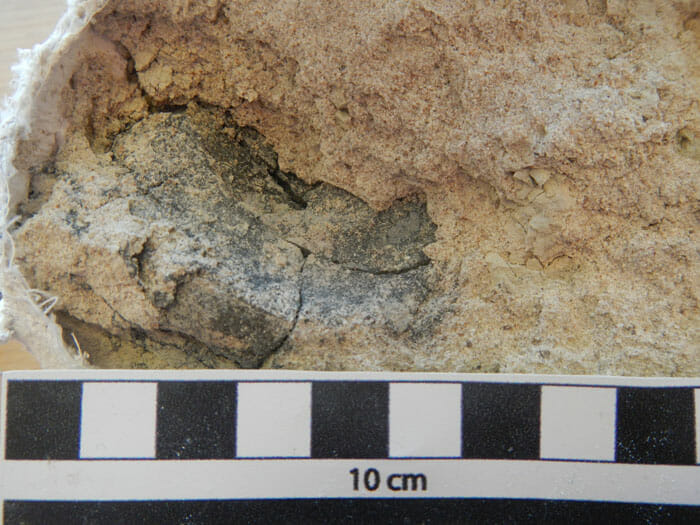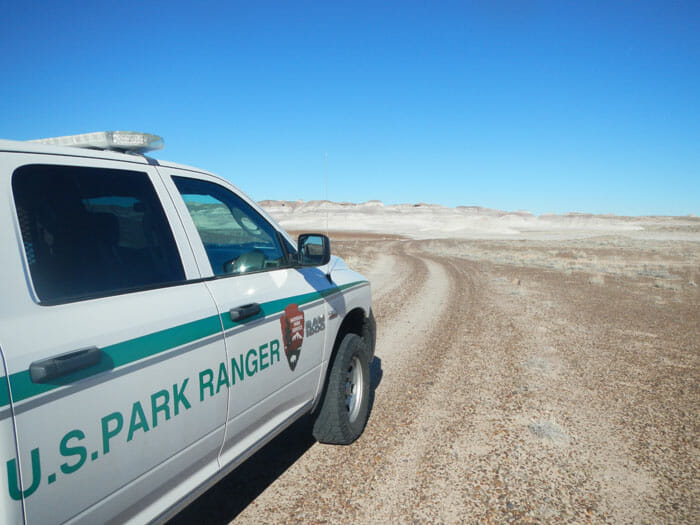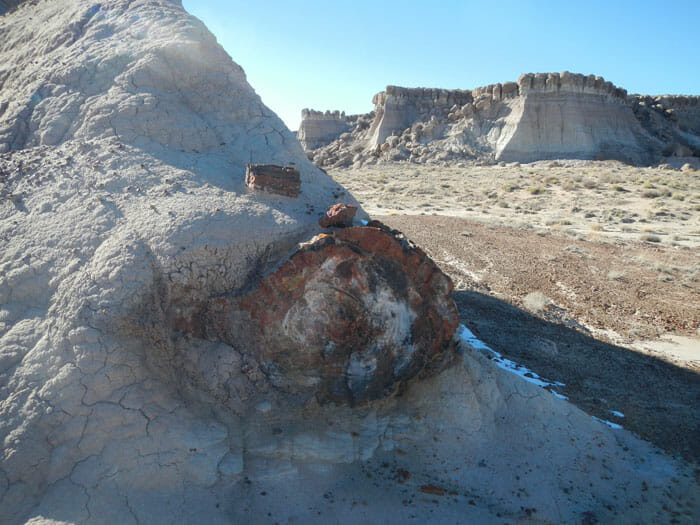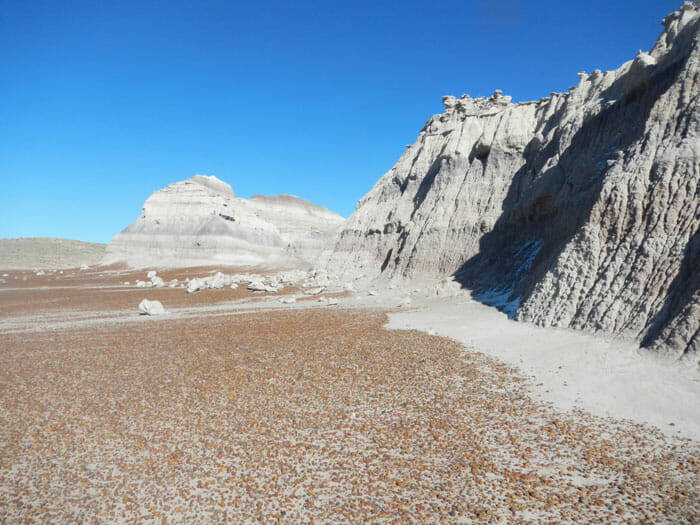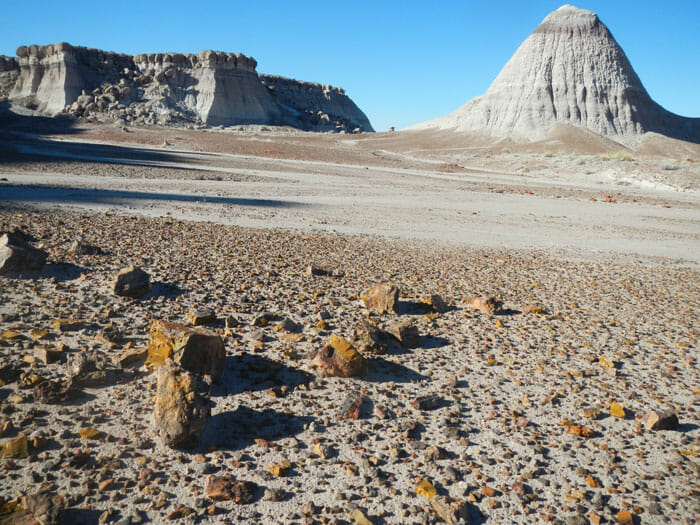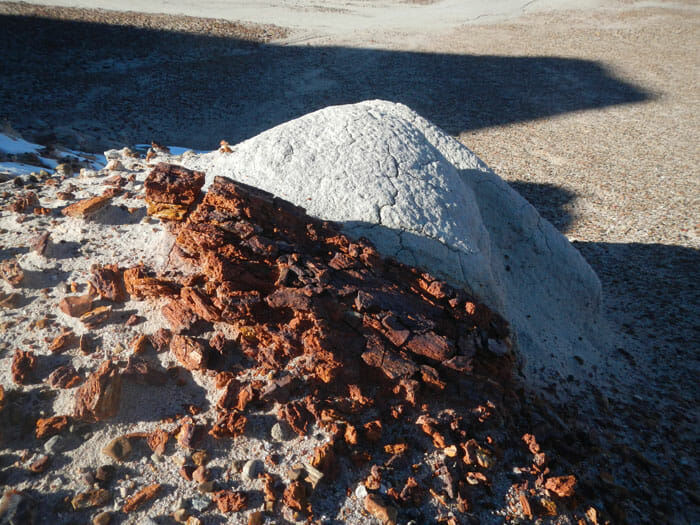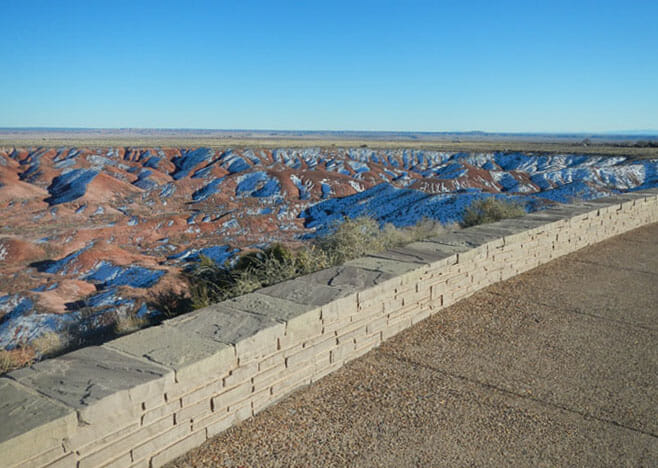After a ridiculous 35 day government shutdown our National Parks are finally open so I hurry up to Petrified Forest National Park from Tucson where I’ve cooled (?) my heels for two weeks. As a former NPS ranger, and now also retired from 35 years of dentistry, I’m anxious to get back into the saddle, so to speak. National Parks allow volunteers to help out and I’ve always been interested in geology and paleontology. PeFo supplies me with a simple campground and a magnetic sign for my car, and it’s a short walk to the office……
There are two labs, of sorts; a paleontology prep lab (my assignment) and a demonstration lab which is available to visitors who can interact with the paleontologists a few days a week. The staff here is incredibly educated not only in educating the visitors, but extending the science of the upper Triassic fossils in northern Arizona–chiefly Phytosaurs here at PeFo.
I spend most of my days looking through a dissecting microscope picking apart matrix from bone fragments, then carefully assembling the pieces into a complete anatomical structure. The matrix is chiefly bentonite with calcite crystals and other exotics which are easily teased from the bones. Take a look:
The whitish matrix is removed with a tungsten-carbide tipped tool. The bone is a whitish mineral-replacement material surrounded by a thin iron oxide residue which allows separation. It’s tedious to say the least and this prep lab houses thousands of specimens that need to be cleaned and reassembled–which is why I’m here. My undergraduate degree was in Geology so here I go!
My first project was to prep and assemble a Phytosaur femur. Phytosaurs were pre-dinosaurs and looked something like 25′ crocodile except more terrifying. This was a small one which I named Otto. Each black/white scale is 1 cm–which took me three days to assemble–about 35 pieces. See below:
Some are extremely small. I can’t say how detailed this process is but every piece of bone and matrix must be separated and later screened. The right hand dot is about 1 mm wide. The two trapezoid pieces to the left would amount to a large grain of sand in your shoe. Everything is eventually accounted for. For those who know me, this a good practice for patience, although not unlike dentistry….
My second project is to dissect out bones in what was thought to be skull fragments, but turned out to be a vertebrae with rib sections. This specimen was cast in the field by an open “jacket” –a plaster mold poured over a partially excavated find. It is separated from the earth matrix, brought to the lab and then taken apart.
Half way through, bones emerge. The matrix flakes away however some of the bone material is very flaky and must be stabilized with a glue cut with acetone. This is the test–separating matrix from bone!
Along this road to discovery, I uncover a small bone fragment about one inch long–still don’t know what it might be. It broke in several pieces as I teased the matrix away.
Here the bone fragments can be seen as the matrix is removed. Fractures are common and frustrating but with glue can be stabilized until exposed.
One can only stare through a dissecting scope for so long so I catch a ride with the road patrol rangers–you’ve seen them–cruising around our parks keeping track of everything. I did this for 7 years in Grand Teton National Park and loved it. So, after nearly 50 years am back in the saddle again. Today, I took a drive into the Eastern Expansion area–a recently acquired region east of the hourglass of PeFo. It’s amazing country with hints of 100 year old cattle grazing (fences, wells) to ancient Puebloan civilizations. The scenery is exquisite.
Land forms are bizarre and the colors and geology amaze. This is near the Blue Mesa stratigraphy which is upper Triassic. There were no birds then, only reptiles anxiously competing for dominance. Here and there, petrified logs are perched on tops of mounds of debris. Utterly amazing.
Here is a 4′ diameter log emerging out of the surrounding debris; this was once a teaming jungle near the equator. The ground is littered with beautiful fragments; we literally walk through a jewelry store.
Google Earth shows stark differences between each side of the Petrified Forest National Park boundary–here at North Rainbow Forest. Log miners have stripped everything leaving nothing but tire tracks and pilfered sand. This is the reason we have National Parks.
A small debris field of iron rich quartzite or chert pebbles exfoliating from the cliffs above–each like a gemstone and undisturbed.
A Marscape perhaps.
An ancient log slowly releases it’s chemistry back into the cauldron called Earth, to be recycled. I am lucky to happen by–another million years and it would be gone….. Below is the loop drive beyond the Painted Desert Inn, built in 1920 and remodeled by the CCC in 1938 when the bentonite foundation started swelling and fracturing the building. This vista captures old and new. It’s a privilege to be able to work again in our national parks–I hope you visit them and support them. Stay tuned!

